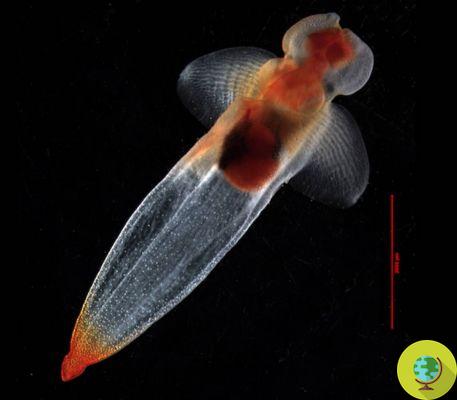
It is one of the most ancestral questions that man has been asking himself for centuries and which today finally has an answer: Who lives in the sea? Just yesterday, scientists from the Census of Marine Life published an inventory of all marine species that inhabit the world's oceans.
He is about to end up run over, his mother saves him
It is one of the most ancestral questions that man has asked himself for centuries and which today finally has an answer: Who lives in the sea? Just yesterday the scientists of the Census of Marine Life have published a inventory of all marine species that inhabit the oceans of the world.
It was a mammoth work that combined the information collected over the centuries with the data obtained from the 10-year census carried out by 360 scientists which has managed to map the animal and plant biodiversity of the 25 marine regions, from the Antarctic to the temperate seas to the tropical ones of the equator.
Published by PLoS ONE magazine, this one historical collection of summary documents and overview of the marine biodiversity it will serve as a reference for measuring the evolution of species over time and will help guide future expeditions to explore the abyss, just like a compass.
In general, the census shows that there are over 230 thousand species that populate the oceans of the Earth of which only a tenth cataloged. Australian and Japanese waters with nearly 33.000 life forms that have achieved species status with their respective scientific name (such as Carcharodon carcharia, aka the great white shark) were by far the richest in biodiversity. Followed by the seas of China (22 thousand), our Mediterranean Sea (17 thousand) and the Gulf of Mexico with 15 thousand species (at least before the oil spill).
As for the typology, the various species have been divided by the scientists as follows:
-
* 19% of crustaceans (crabs, lobsters, shrimps, shrimps, barnacles, etc ...)
* 17% clams (squid, octopus, clams, snails)
* 12% fish (including sharks)
* 10% protozoa (unicellular microorganisms)
* 10% of seaweed and other similar plant organisms
* 7% Annelids (segmented worms)
* 5% Cnidaria (including sea anemones, corals and jellyfish)
* 3% Platelminti (including flat worms)
* 3% Echinoderms (including starfish, brittle stars, sea urchins, sand and sea dollars
cucumbers)
* 3% Poriferi (including sponges)
* 2% Bryozoa ('moss animals')
* 1% tunicates (including so-called sea sketches)
The remainder was classified as "other invertebrates (5%)"and "other vertebrates (2%)”Category, the latter in which they were also included whales, sea lions, seals, sea birds, turtles and walruses which, paradoxically, represent the best known marine animals, but which constitute a very small part of the marine biodiversity.
Among the data that emerge from the work of the Census, those concerning the Mediterranean Sea which, despite being among the richest in biodiversity, second only to the seas of Japan and Austrolia, and with over 7% of species not found elsewhere (percentage exceeded only by Antarctica with 15%), it turned out the sea more at risk of losing its assets, even more than the Gulf of Mexico, due to the presence of man and gods climate changes.
Our sea, in fact, is the part of the world with the most commercial marine routes and in the Adriatic alone there are 100 wells for the extraction of methane. Add to this the intensive fishing and the effects of global warming which, altering the ecosystem, heavily undermine the more than 17.000 species found.
The fact is that the Mediterranean Sea is a inland sea surrounded by densely populated coasts, densely cultivated and massively industrialized areas with the consequence of making all discharges, waste and chemicals deriving from crops and factories end up in the water.
“In the Mediterranean we were able to study both coastal and abyssal species - commented Roberto Danovaro of the Marche Polytechnic who took part in the census - and many surprises came out. As for the abyss, for example, areas we thought lifeless showed 3500 species, but 70% is yet to be discovered. This is one more reason for defend the abyss, for example from drilling, because we cannot afford to lose what we do not yet know".
The full results of the research carried out by the Census will be officially presented on 4 October in London, but scientists are keen to point out that the cataloging is still partial because there are so many species still unknown. For this it would be necessary for the research to continue, but funding is currently lacking as the American foundation that took care of the research will devote itself to something else.
France and other countries are already moving to continue the census of the seas which becomes essential for monitoring the evolution of species, many of which may soon disappear.
Simona Falasca
Read the entire summary of the census (In English)


























